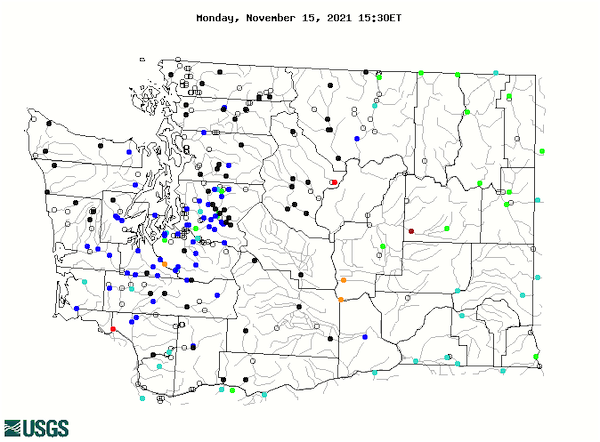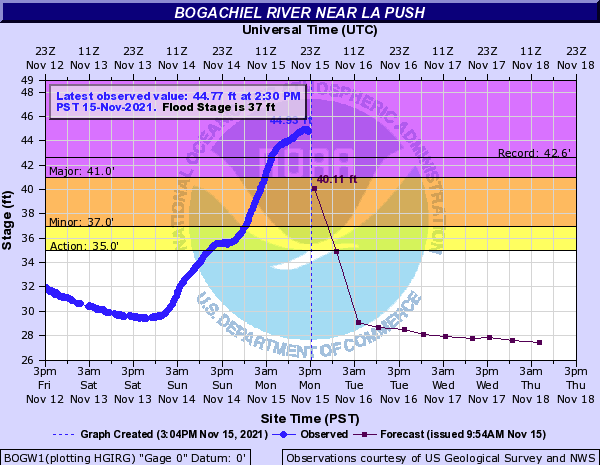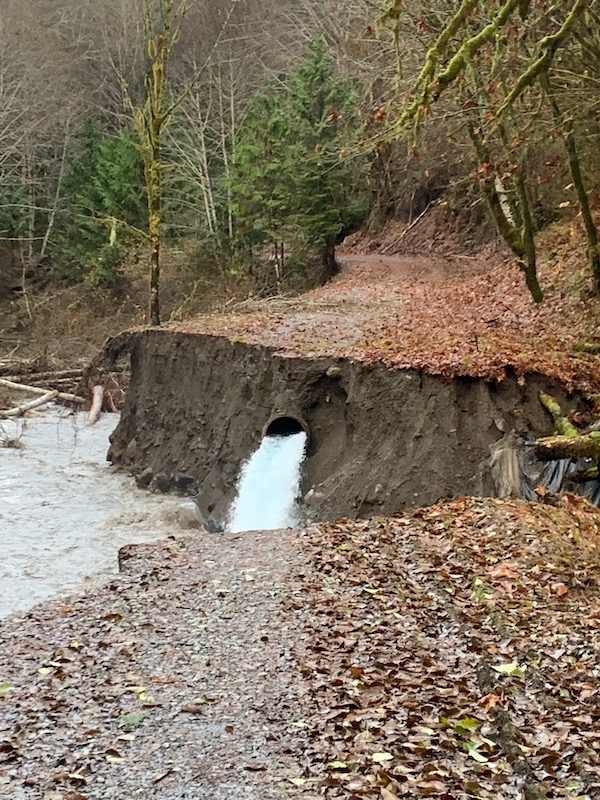Flood Damage Assessment Begins For WDFW
Editor’s note, 9:05 a.m., November 17, 2021: WDFW spokeswoman Eryn Couch this morning reports: “Just heard back from our hatchery folks and it sounds like we’re continuing to manage the situation to keep things operational – no additional updates from what we last shared.“
As flood waters begin to recede today across the soaking-wet northwestern slice of Washington, fish managers will get a better look at impacts to state salmon and steelhead hatcheries.

WDFW spokeswoman Carrie McCausland yesterday evening said record flows had occurred on several West End streams, while the National Weather Service tweeted that the Samish and Nooksack had also set new high marks as the weekend atmospheric river unleashed torrents of rain over the region and melted snow at higher elevations.
The small towns of Everson, Hamilton, Sumas and Ferndale were inundated and one man was swept away after hanging onto a tree between Everson and Nooksack. Coast Guard air crews rescued 10 people west of Forks. Numerous highways were closed due to flooding or landslides, while some schools cancelled classes because of power outages.
McCausland said that water had entered buildings at Bogachiel and Kendall Creek Hatcheries, while “severely high water” was reported at Sol Duc and Samish Hatcheries.

“Crews are working around the clock to keep things operational and have so far have been successful,” McCausland said Monday just after 5 p.m.
Tuesday morning WDFW’s North Sound fisheries manager Edward Eleazer reported “No fish loss but some major infrastructure damage at Baker,” meaning the Baker Lake Fish Hatchery between the two reservoirs on the Baker River.
Floodwaters sliced through a pipe that feeds the facility.
“Amazingly there was no loss, as hatchery staff worked throughout the night keeping fish alive, spawning ripe fish, and redistributing water,” Eleazer reported. “Puget Sound Energy and WDFW staff really saved the day on this one.”

An important question is what the high, gravel-moving flows will have done to wild Chinook and pink salmon redds. While coho probably will be OK, given that most of their spawning hasn’t occurred yet, the other two species are more midfall spawners. 2003’s massive late October flood heavily impacted Skagit pinks for several returns. Scouring flows have been increasing over the decades.
“As far as redds go in the Skagit and other systems, we are worried,” said Eleazer. “Our hope is that a majority of the salmon successfully spawned in tributaries and protected areas in the mainstems. As smolts outmigrate in the spring we will have good information from our smolt traps and beach surveys about their survival.”
Meanwhile, WDFW Police reported their game wardens “have been working tirelessly in the North Puget Sound region to help with rescue efforts due to the rising water and residential flooding.”
The agency also tweeted that Skagit Wildlife Area’s Headquarters Unit, popular with waterfowlers, will be closed until Friday due the flooding.
After June’s record-breaking heat and a dry summer, this fall has been particularly wet, with flooding earlier this month along the Skokomish River and Oregon’s North Coast valleys, including the Tillamook Bay system.
